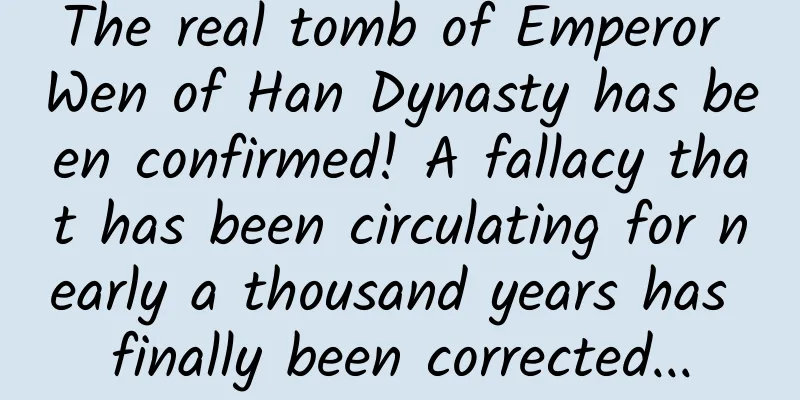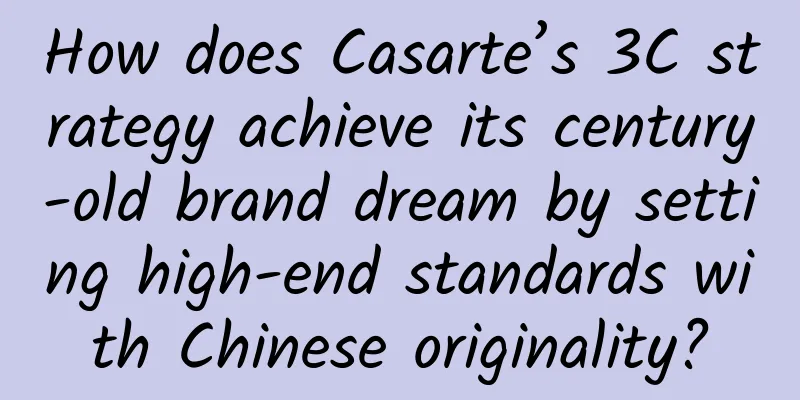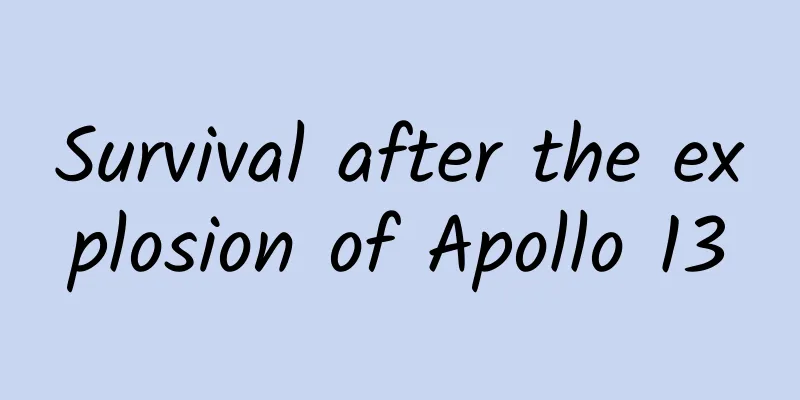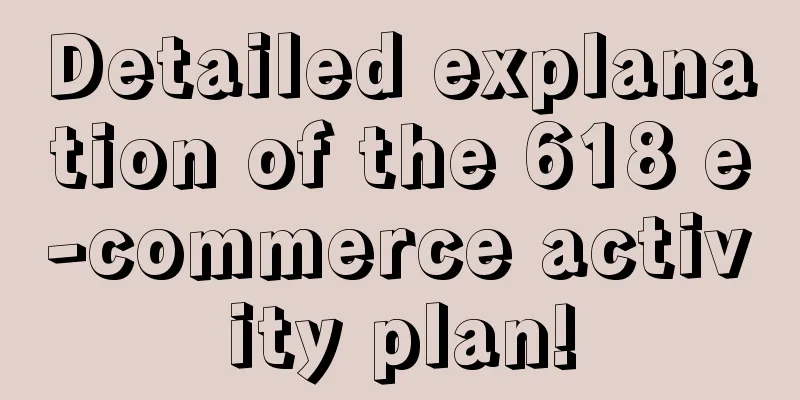The real tomb of Emperor Wen of Han Dynasty has been confirmed! A fallacy that has been circulating for nearly a thousand years has finally been corrected...

|
Expert of this article: Shi Hongbo, teacher and master's supervisor at the School of History and Culture, Tianjin Normal University This article was reviewed by Wang Yuliang, Vice Dean of the School of History and Culture, Tianjin Normal University, Professor, Master's Supervisor On December 14, 2021, the State Administration of Cultural Heritage officially announced that the Jiangcun Tomb located in Baqiao District, Xi'an City, Shaanxi Province is the real Tomb of Emperor Wen of Han. Image source: Weibo screenshot According to the traditional academic understanding, the Tomb of Emperor Wen of Han was located in a place called Fenghuangzui. The confirmation of the Jiangcun Tomb as the Tomb of Emperor Wen of Han can be said to have corrected a mistake that has been circulating for thousands of years. So, how did archaeologists make the tomb of Ba unearthed? Let's find out. Emperor Wen of Han's Mausoleum is located in the "Phoenix Mouth"? False! In fact, it was a very clear fact in the Han Dynasty that Emperor Wen of Han was buried in Ba Ling, because it was Emperor Wen who chose the location of his tomb himself and changed the selected address (called Zhiyang at the time) to "Ba Ling". Before his death, Emperor Wen explicitly requested in his will that "the mountains and rivers of the Ba Mausoleum should remain as they were, and no changes should be made", that is, the original topography and landforms should not be changed for the construction of the mausoleum. Therefore, there is no high mound in the Ba Mausoleum. However, as time went by and the mausoleum buildings were destroyed, the exact location of the mausoleum became a mystery. The "Ba Mausoleum" became an area centered on Bailuyuan, surrounded by low hills and the Bashui and Chanshui rivers, but without clear landmarks. Ancient documents are rather vague. Both the Records of the Grand Historian and the Book of Han say that Emperor Wen was buried in the Ba Mausoleum, but there is no clear location. Instead, a geographical book of Guanzhong called the Three Auxiliary Yellow Map says that the Ba Mausoleum is "seventy miles east of Chang'an". The "seventy miles" seems very accurate, but it is only an approximate range. In terms of location, Bai Luyuan is not east of Chang'an in the Han Dynasty, but southeast. However, this record in the Three Auxiliary Yellow Map is likely to have misled future generations. Documents after the Han Dynasty did not go beyond the above records. Strangely, in the Yuan Dynasty, a man named Luo Tianxiang suddenly recorded the specific location of the imperial tomb in his own compilation "Classified Records of Chang'an", "at the foot of Fenghuangzui, north of Bailuyuan, 40 miles east of Tonghua Gate, Jingzhao". Fenghuangzui is at the northern end of Bailuyuan, south of Maoyaoyuan Village, Xiwang Street, Baqiao District today. There is a low cliff here, which does look a bit like the burial mound of the emperor's tomb. Image source: CCTV News Client Luo Tianxiang was a native of Chang'an. He had a difficult career, but seeing that Chang'an was devastated by war and many historical sites were destroyed, he compiled the "Classified Records of Chang'an" based on Song Minqiu's "Records of Chang'an" in the Northern Song Dynasty, recording the historical changes of Guanzhong area for more than 2,000 years since the Zhou Dynasty. Perhaps because Luo Tianxiang was a local and recorded the location of the Tomb of the Emperor in great detail, his statement has become the final conclusion for nearly a thousand years. Image source: CCTV News Client Many people in the Ming and Qing dynasties visited the Ba Mausoleum to pay homage to the ancient monuments, and many people specially erected steles for the Ba Mausoleum. In today's archaeological survey, more than 10 steles were found. Among the people who erected the steles, it is clear that Bi Yuan, an academic official who served as the governor of Shaanxi and the governor of Shaanxi and was proficient in epigraphy, has undoubtedly increased the credibility of the Ba Mausoleum being located in Fenghuangzui. Therefore, after the founding of New China, the Ba Mausoleum in Fenghuangzui was once established as a national key cultural relic protection unit. However, the claim that Fenghuangzui was the location of the Ba Mausoleum was denied in 2011. That year, archaeologists spent half a year surveying Fenghuangzui, but the result was ridiculous: there was no tomb here! Not to mention the Ba Mausoleum of Emperor Wen, there was not even an ordinary tomb. Therefore, the Ba Mausoleum must be somewhere else. How to determine that the Jiangcun Tomb is the Mausoleum of Emperor Wen of Han? In 2001, some cultural relics stolen from the Jiangcun Tomb were scattered, which attracted great attention from the country. Archaeologists began to conduct protective surveys and excavations on the Jiangcun Tomb. In 2011, after the Fenghuangzui Ba Mausoleum was denied, archaeologists focused their attention on the Jiangcun Tomb, which was being surveyed. The location of the Jiangcun Tomb is very special. 0.8 km to the east is the long-established tomb of Empress Dou, who was the empress of Emperor Wen and the mother of Emperor Jing. 2 km to the southwest is the Nanling Tomb, where the tomb owner is Empress Dowager Bo, the mother of Emperor Wen. Judging from this relationship, the tomb owner of the Jiangcun Tomb should have a close relationship with Empress Dowager Dou and Empress Dowager Bo. Image source: CCTV News Client Before the Fenghuangzui was denied to be the Tomb of the King, the owner of the Jiangcun Tomb was once believed to be Princess Guantao, the daughter of Emperor Wen and Empress Dou and the granddaughter of Empress Dowager Bo. She was both the aunt and mother-in-law of Emperor Wu of Han. However, the shape of the Jiangcun Tomb exceeded the specifications that the Princess Guantao should have. Archaeologists discovered that the Jiangcun Tomb was in the shape of the Chinese character "亞". This type of tomb has four passages in the east, south, west and north. In the Han Dynasty, it was generally a tomb shape exclusively for emperors and empresses. The shape below the Chinese character "亞" is the Chinese character "中", which has two passages and is generally a burial shape for princes; the shape below it is the Chinese character "甲", which has one passage and is generally a burial shape for marquises. The Princess Guantao was only a princess and could not use the burial specifications of the emperor or empress. Naturally, she could not be the owner of the tomb. Image source: Screenshot of CCTV News Weibo Next, the relative position of the Jiangcun Tomb and Empress Dou's Mausoleum aroused the interest of archaeologists. The imperial mausoleums on the Xianyang Plateau were originally built with mausoleums, in which there were tombs of emperors and empresses (or equivalent to empresses), and the relative positions were exactly the same as the Jiangcun Tomb and Empress Dou's Mausoleum, one in the west and one in the east. Since the Tomb of the King is not in Fenghuangzui, could it be the Jiangcun Tomb with the "亚"-shaped emperor specifications? In fact, as early as 2015, some experts speculated that this Jiangcun Tomb was most likely the Tomb of Emperor Wen. This speculation was soon supported by more evidence as archaeological excavations progressed. Exterior view of the Ba Mausoleum (Photo source: CCTV News Client) In order to find out the relationship between the Jiangcun Tomb and Empress Dou's Mausoleum, archaeologists set a larger area for exploration and found a rectangular rammed earth wall, about 1,200 meters from east to west and 860 meters from north to south, which just enclosed the two tombs in the same area. This area is very likely the cemetery of Ba Ling. In fact, there would be no one else except Emperor Wen of Han who could be buried in the same area as Empress Dou and use the "亚"-shaped tomb of the emperor. In addition, archaeologists also excavated eight outer burial pits around the Jiangcun Tomb, as well as some pottery kiln sites, burial tombs (pits), etc., and unearthed many cultural relics, among which two categories are worth noting: 1. Pottery figurines There are about a thousand of them, all of which are painted nude pottery figurines, which are very similar to the pottery figurines unearthed from the Yangling Mausoleum of Emperor Jing of Han. Could they be the special pottery figurines for burial made during the reigns of Emperor Wen and Emperor Jing, two successive emperors? 2. Some small copper seals about 1 cm square Image source: CCTV News Client The seal characters "Zhong Sikong Yin", "Che Fu", "Qi Fu", "Cang Yin" and "Fu Yin" actually symbolize the various institutions surrounding the emperor in governing the country. They are the funeral characteristics of "treating the dead as if they were alive" in the Qin and Han dynasties. Ming organ seals symbolizing official offices have been found in imperial tombs such as the Mausoleum of Qin Shihuang and the Yangling Mausoleum of Emperor Jing. Therefore, these official seals in the Jiangcun Tomb are strong evidence of the emperor's identity as the tomb owner, because no one else could have led these administrative agencies to govern the world. Is the discovery of Emperor Wen of Han's Mausoleum related to tomb robbery? Since 2001, the robbery of the Jiangcun Tomb by criminals has triggered a re-positioning and rethinking of Emperor Wen's Tomb. This is a fact, and we are thankful but definitely not happy. Fortunately, these acts of looting only destroyed some of the ancillary burial facilities of the Ba Mausoleum, and did not directly loot the Ba Mausoleum itself. Even so, these destroyed ancillary burial facilities and related cultural relics are still important materials for our understanding of the Ba Mausoleum and the Han Dynasty imperial mausoleum system. If we can see the original appearance before the destruction, it will naturally have a higher reference value. Archaeological work is extremely arduous, but it adheres to scientific principles. Image source: Screenshot of CCTV News Weibo It took 10 years from the denial of the Fenghuangzui Ba Mausoleum to the official confirmation by the State Administration of Cultural Heritage that the real location was the Jiangcun Tomb. During these 10 years, through scientific investigation and analysis of the shape, location, and cultural relics unearthed from the accompanying tombs (pits) of the Jiangcun Tomb, combined with documentary records, a relatively complete chain of evidence was finally formed, which finally locked the real location of the Ba Mausoleum. We no longer know why Luo Tianxiang made such an erroneous record, which led to thousands of years of misleading. However, the recording and circulation of documents are always subject to human influence, and misinformation is inevitable. At this time, scientific archaeological excavations can provide direct underground evidence and pave the way for exploring the historical truth. Illegal excavation is entirely for the purpose of pursuing profit, and will never consider the protection of the original state of ruins and cultural relics. It is not only disrespectful to the deceased, but also destructive to cultural relics and sites, and is not conducive to the exploration of Chinese civilization. The best way to protect underground cultural relics is not to disturb them. When excavation conditions are not mature, the underground ruins and cultural relics should be kept in their original state for the time being, pending sufficient progress in technology before excavation in the future. The pictures in this article with the "Science Popularization China" watermark are all from the copyright gallery. The pictures are not authorized for reprinting. |
<<: What is the Winter Olympics weather service? | 50 days to go
>>: “Top Ten Scientists of 2021”, the soul figure of China’s Mars program is on the list!
Recommend
Advertising is returning, and before the value of television is re-evaluated, can you still ridiculously say that television is dead?
The value of television is seriously underestimat...
The bigger the city, the more opportunities there are? The law behind this is →
Different systems, common laws of scale | Tuchong...
Can Huawei HMS replace Google's GMS? Check out the test by foreign media
introduction [[319525]] Google's GMS? Check o...
Keep brand marketing promotion model!
In recent years, I have found that vertical Inter...
Product operation and promotion: plan a real event!
Planning is also a basic ability of operation. No...
ARCFOX, a high-end brand jointly developed by BAIC New Energy and Magna, will compete with Lynk & Co and WEY
On June 21, at the media communication salon afte...
Self-driving cars need to go through 15 challenges before they can “help everyone”
What does the future of driverless cars have to d...
Understand these 5 types of activity classification to make operations more efficient
Clarifying the purpose of an event should be the ...
Elements and channels of online product promotion plan!
Viewpoint 1: The general promotion process is as ...
After returning to the living room, young people become the promoters of smart TV
In an era of rapid development of Internet techno...
Build a core user growth system from 0 to 1!
In the past week, I have done a lot of thinking a...
Thoughts on creating popular e-commerce products
In June 2020, I came to Shenzhen and started to b...
The CTO behind a technical team of 1,000 people: CTO training is far more than technical training
[51CTO.com original article] While most technical...
Meizu Note 6 review: A 1,000-yuan phone that can rival iPhone 7 in terms of camera performance
Without the guest performance at the opening of t...
Online event promotion, increased 100,000 users in seven days!
What kind of event can enable a beauty store to g...









